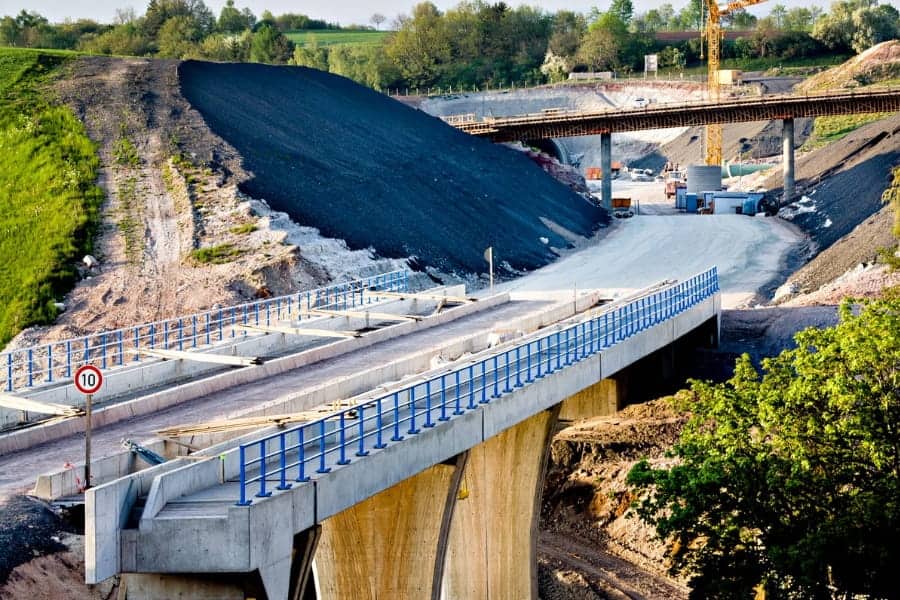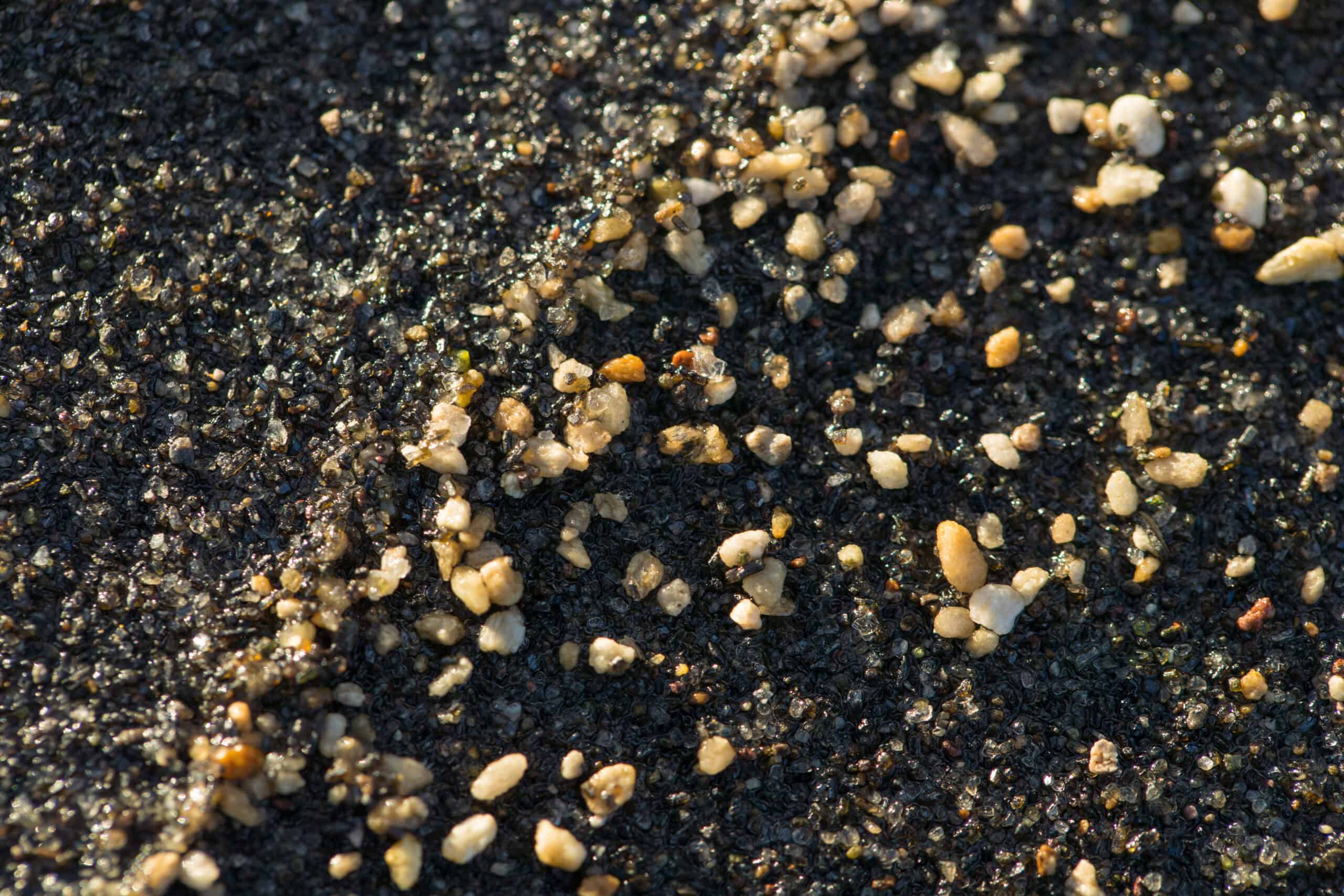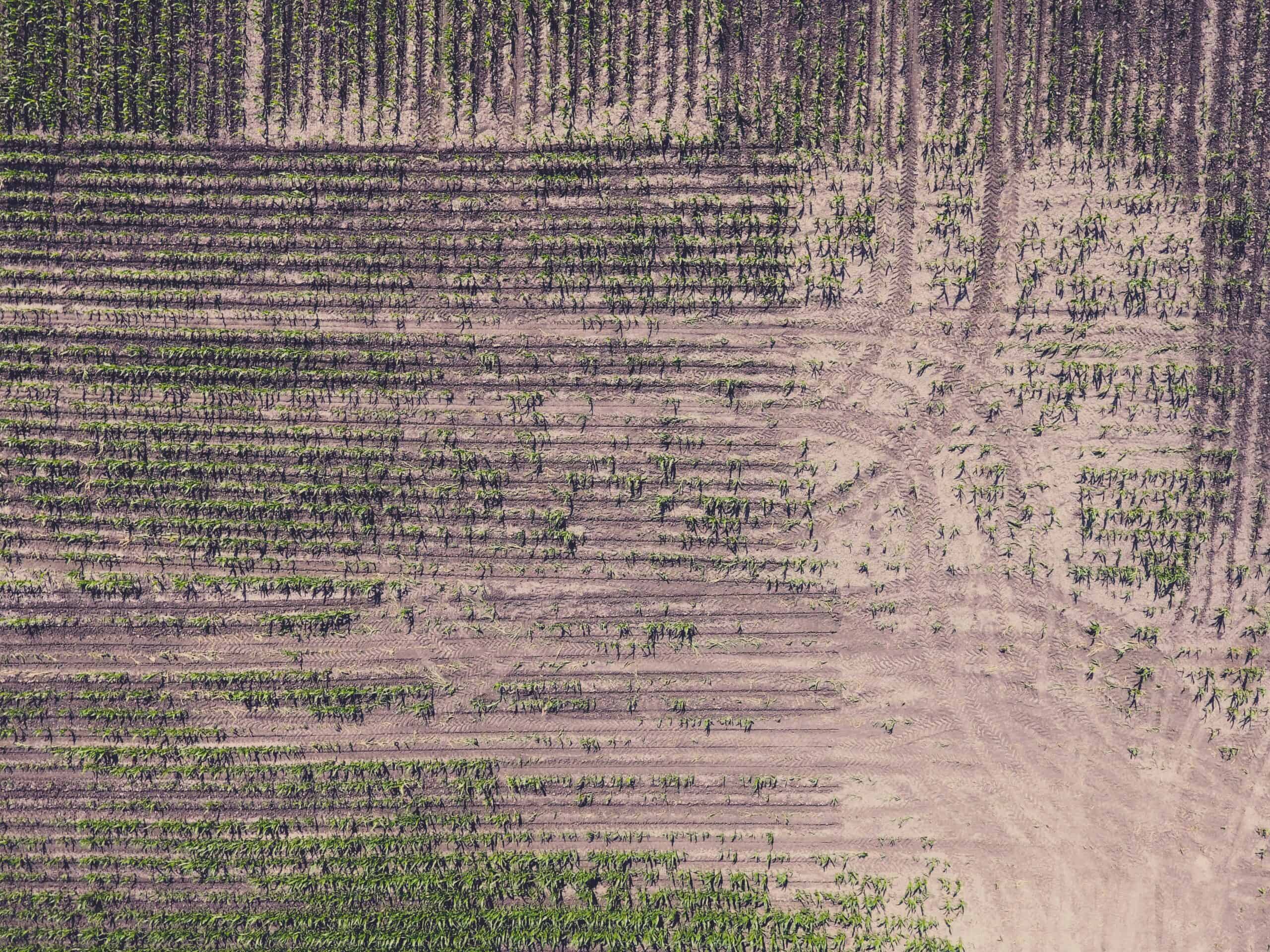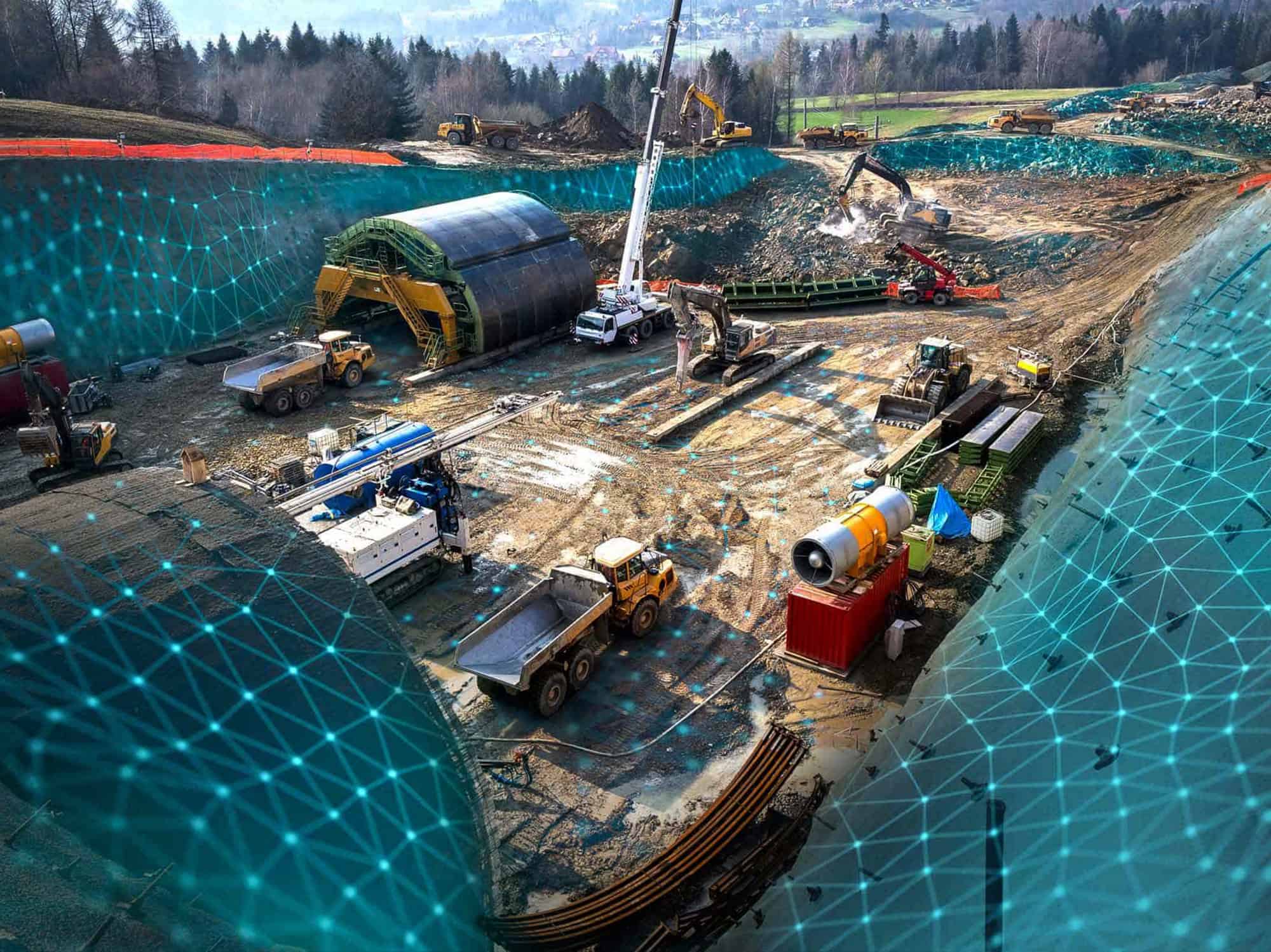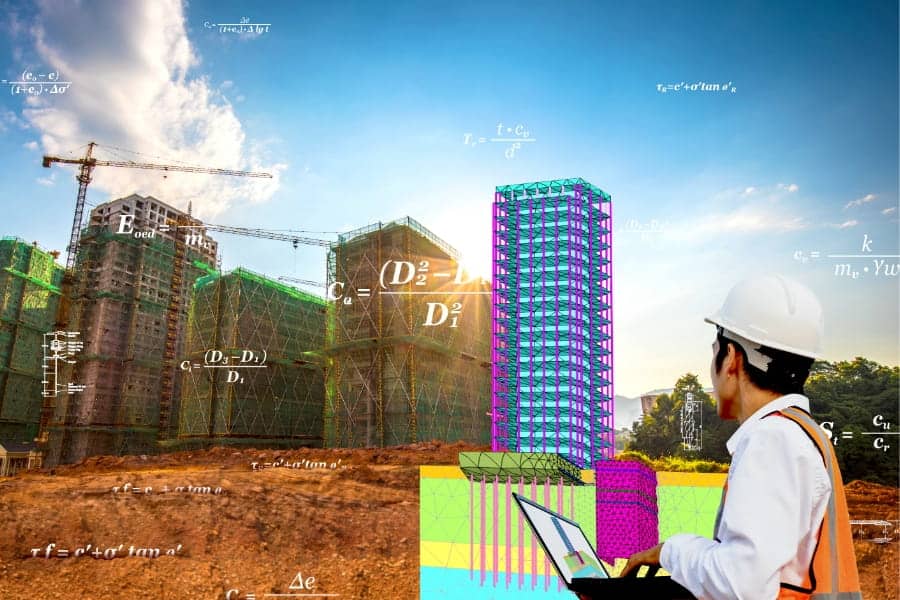Bentley PLAXIS includes many advanced material models besides Hooke’s law of isotropic elasticity and Mohr-Coulomb. The advanced material models involve specific features such as stress-dependency of stiffness, strain-hardening / softening, memory of pre-consolidation, critical state, anisotropy, creep, swelling and shrinkage. With those advanced models, PLAXIS users are able to simulate the behaviour of soils and rocks more realistically and get more accurate results from their PLAXIS calculations.
This blog discusses the material models in PLAXIS 2D, PLAXIS 3D.
Linear Elastic model (LE)
The Linear Elastic model is based on Hooke’s law of isotropic elasticity. It involves two basic elastic parameters, i.e. Young’s modulus E and Poisson’s ratio ν. Although the Linear Elastic model is not suitable to model soil, it may be used to model stiff volumes in the soil, like concrete walls, or intact rock formations.
Mohr-Coulomb model (MC)
The linear elastic perfectly-plastic Mohr-Coulomb model involves five input parameters, i.e. E and ν for soil elasticity; φ and c for soil plasticity and ψ as an angle of dilatancy. This Mohr-Coulomb model represents a ‘firstorder’ approximation of soil or rock behaviour. It is recommended to use this model for a first analysis of the problem considered. For each layer one estimates a constant average stiffness or a stiffness that increases linearly with depth. Due to this constant stiffness, computations tend to be relatively fast and one obtains a first estimate of deformations.
Hardening Soil model (HS)
The Hardening Soil model is an advanced model for the simulation of soil behaviour. As for the Mohr-Coulomb model, limiting states of stress are described by means of the friction angle, φ, the cohesion, c, and the dilatancy angle, ψ. However, soil stiffness is described much more accurately by using three different input stiffnesses: the triaxial loading stiffness, E50, the triaxial unloading stiffness, Eur, and the oedometer loading stiffness, Eoed. As average values for various soil types, Eur ≈ 3E50 and Eoed ≈ E50 are suggested as default settings, but both very soft and very stiff soils tend to give other ratios of Eoed / E50’ which can be entered by the user.
In contrast to the Mohr-Coulomb model, the Hardening Soil model also accounts for stress-dependency of stiffness moduli. This means that all stiffnesses increase with pressure. Hence, all three input stiffnesses relate to a reference stress, usually taken as 100 kPa (1 bar).
Besides the model parameters mentioned above, initial soil conditions, such as pre-consolidation, play an essential role in most soil deformation problems. This can be taken into account in the initial stress generation.
Hardening Soil model with small-strain stiffness (HSsmall)
The Hardening Soil model with small-strain stiffness (HSsmall) is a modification of the above Hardening Soil model that accounts for the increased stiffness of soils at small strains. At low strain levels most soils exhibit a higher stiffness than at engineering strain levels, and this stiffness varies non-linearly with strain. This behaviour is described in the HSsmall model using an additional strain-history parameter and two additional material parameters, i.e. Gref0 and γ0.7` Gref0 is the small-strain shear modulus and γ0.7 is the strain level at which the shear modulus has reduced to about 70% of the small-strain shear modulus. The advanced features of the HSsmall model are most apparent in working load conditions. Here, the model gives more reliable displacements than the HS model. When used in dynamic applications, the Hardening Soil model with smallstrain stiffness also introduces hysteretic material damping.
Soft Soil model (SS)
The Soft Soil model is a Cam-Clay type model especially meant for primary compression of near normally consolidated clay-type soils. Although the modelling capabilities of this model are generally superseded by the Hardening Soil model, the Soft Soil model is better capable to model the compression behaviour of very soft soils.
Soft Soil Creep model (SSC)
The Hardening Soil model is generally suitable for all soils, but it does not account for viscous effects, i.e. creep and stress relaxation. In fact, all soils exhibit some creep and primary compression is thus followed by a certain amount of secondary compression.
The latter is most dominant in soft soils, i.e. normally consolidated clays, silts and peat, and PLAXIS thus implemented a model under the name Soft Soil Creep model. The Soft Soil Creep model has been developed primarily for application to settlement problems of foundations, embankments, etc. For unloading problems, as normally encountered in tunnelling and other excavation problems, the Soft Soil Creep model hardly supersedes the simple Mohr-Coulomb model. As for the Hardening Soil model, proper initial soil conditions are also essential when using the Soft Soil Creep model. This also includes data on the pre-consolidation stress, as the model accounts for the effect of overconsolidation. Note that the initial overconsolidation ratio also determines the initial creep rate.
Joined Rock model (JR)
The Joined Rock model is an anisotropic elastic-plastic model, especially meant to simulate the behaviour of rock layers involving stratification and particular fault directions. Plasticity can only occur in a maximum of three shear directions (shear planes). Each plane has its own strength parameters φ and c. The intact rock is considered to behave fully elastic with constant stiffness properties E and ν. Reduced elastic properties may be defined for the stratification direction.
Modified Cam-Clay model (MCC)
The Modified Cam-Clay model is a well known model from international soil modelling literature; see for example Muir Wood (1990) (on page 254). It is meant primarily for the modelling of near normally consolidated clay-type soils. This model has been added to PLAXIS to allow for a comparison with other codes.
NGI-ADP model
The NGI-ADP model is an anisotropic undrained shear strength model. The soil shear strength is defined by means of Su values for active, passive and direct simple shear stress states. The model may be used for onshore and offshore applications in undrained clays and silts.
UDCAM-S model
The Simplified UnDrained Cyclic Accumulation Model (UDCAM-S) is an advanced model to deal with undrained soil behaviour and degradation of the strength and stiffness in cyclic loading of clay or very low permeable silty soils. The UDCAM-S model is derived from the complex UDCAM model by NGI (Andersen & Jostad, 2009 (on page 251)) with simplifications in order to be more suitable for engineering practice. The material model is based on the NGI-ADP model for the undrained behaviour of clays, implementing a pre-processing procedure called cyclic accumulation tool (See the Reference Manual – Chapter 6 – Cyclic accumulation and optimisation tool) to obtain the degraded parameter set based on the type of analysis the user has to perform.
Sekiguchi-Ohta model
The Sekiguchi-Ohta model is a Cam-Clay type of model with anisotropic yield contour defined by K0nc. Two versions of the model exist: The inviscid model is a time independent model which has similarities with the Soft Soil model. The viscid model is time-dependent and has similarities with the Soft Soil Creep model. Both models have been developed in Japan. These models were previously available as user-defined models, but have become standard models in PLAXIS nowadays.
Hoek-Brown model (HB)
The Hoek-Brown model is an isotropic elastic perfectly-plastic model for weathered rock based on the 2002 edition of the Hoek-Brown failure criterion. This non-linear stress-dependent criterion describes shear failure and tensile failure by a continuous function, and is familiar to most geologists and rock engineers. Besides the elastic parameters (E and ν), the model involves practical rock parameters such as the uni-axial compressive strength of the intact rock (σci), the Geological Strength Index (GSI), and the disturbance factor (D).
UBC3D-PLM model
The UBC3D-PLM model is an advanced model for the simulation of liquefaction behaviour in dynamic applications. The UBC3D-PLM model employs two yield surfaces to guarantee a smooth transition near the mobilised friction angle. The UBC3D-PLM model uses the Mohr-Coulomb yield condition with an hardening law similar to the Hardening Soil model. For the secondary state, the UBC3D-PLM model incorporates a densification law through a second yield surface with a kinematic hardening rule based on the number of loading cycles. This correlation improves the precision of the evolution of the excess pore pressure.
The dynamic applications require a deep and extended investigation of the soil deposit. However, the UBC3DPLM model implements a specific formulation with input parameters based on the most common tests: drained triaxial tests (CD TxC) or standard penetration tests (SPT).
Concrete model
The Concrete model is an advanced elastoplastic model for concrete and shotcrete structures. It simulates the time-dependent strength and stiffness of concrete, strain hardening-softening in compression and tension as well as creep and shrinkage. The failure criterion involves a Mohr-Coulomb yield surface for deviatoric loading, which is combined with a Rankine yield surface in the tensile regime. The Concrete model employs 25 input parameters, but most of them can be derived from standard uniaxial tensile and compression tests and are generally familiar to structural engineers.
Calibration of model parameters using the SoilTest facility
The SoilTest facility may be used to check the performance of material models and the chosen model parameters in well-defined soil lab test conditions as well as in arbitrary stress-strain conditions. In this way, users can compare the model response with real lab test data and get a feel for the accuracy at which real soil behaviour is approximated by the model. Even if a perfect match is obtained, it is good to realise that using calibrated material models in practical applications (where conditions are different than in the lab) may still lead to differences between the finite element model and reality. Nevertheless, the use of the SoilTest facility can help in understanding the capabilities and limitations of the material model and the influence of the model parameters.
Reference:
Bentley communities: https://bentleysystems.service-now.com/community?id=kb_article&table=kb_knowledge&sys_id=162b5a8a87ec1e98abaf2fc6cebb3527
PLAXIS manual
Learn more about PLAXIS with Bentley’s eStore:
More resources and webinars on PLAXIS soil models here.
For the price and benefits of the PLAXIS Virtuoso Subscription, please visit PLAXIS.
Not seeing the answers you are looking for? Contact a PLAXIS expert now. We are here to help.
